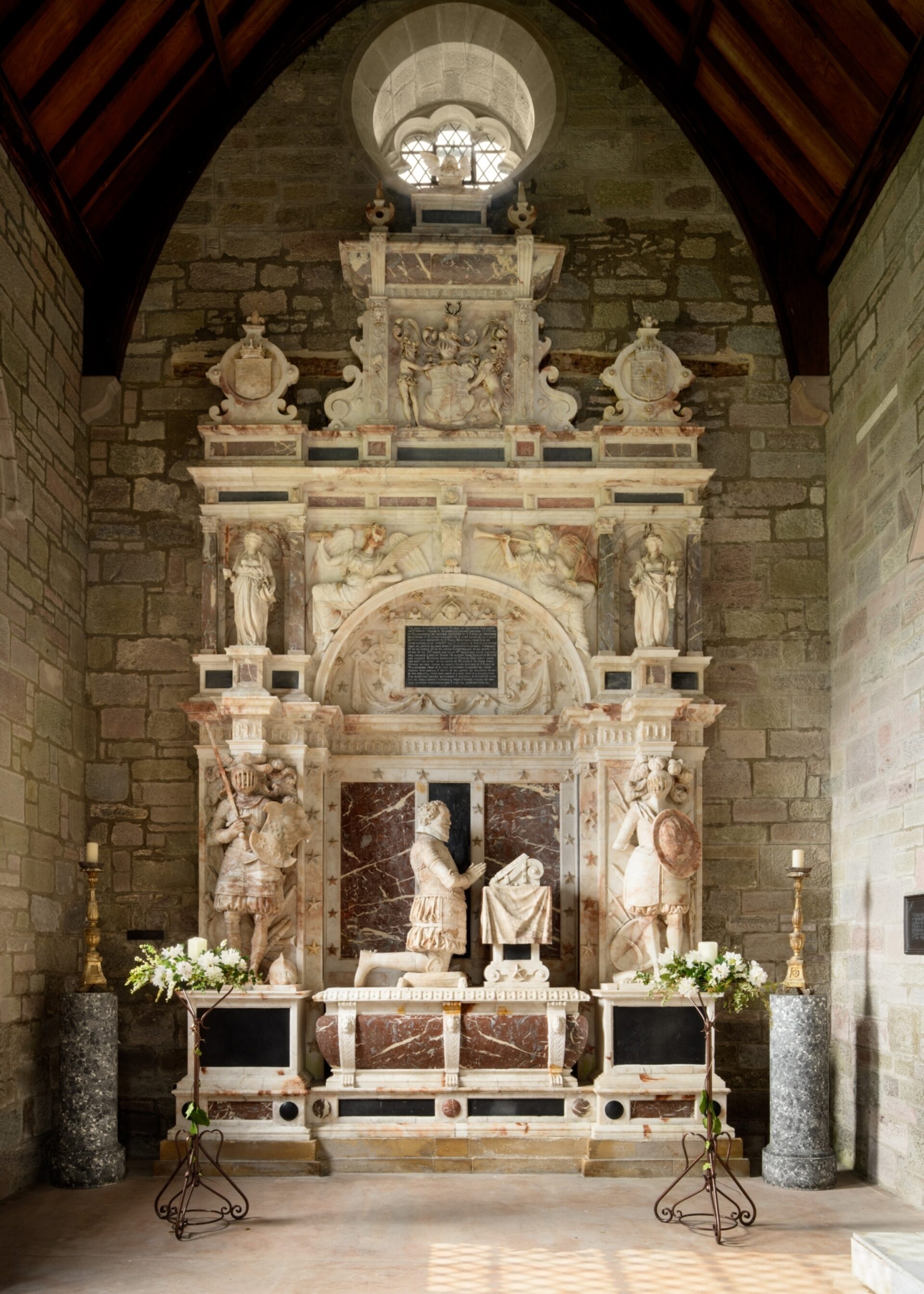The chapel at Scone Palace stands as a testament to Scotland's rich architectural heritage and spiritual significance. It bears witness to centuries of history, tradition, and royal patronage.
Constructed in the early 19th century, the chapel reflects the prevailing architectural styles of the period, blending elements of Gothic Revival and Neoclassical design. Its graceful proportions, soaring spires, and intricate stonework evoke a sense of grandeur and reverence, inviting visitors to pause and contemplate its timeless beauty.
As well as being a chapel, this small gothic building commemorates a great act of reconciliation. The Italian alabaster monument inside depicts David Murray, 1st Viscount Stormont, kneeling in prayer between the figures of his two great friends, the Marquis of Tullibardine and the Earl Marischal, whose long and bitter feud he had helped to resolve in the early 16th century.
Contemporary drawings suggest that there was a building of some kind here in the 1st Lord Stormont’s time, and parish records tell of the first parish church being built here in 1624 on what was probably the site of the early Culdee settlement. The church was remodelled as a gothic chapel by William Atkinson in the 3rd Earl’s day to complement the style of the house. The alabaster monument was made by the great London sculptor Maximilian Colt in 1618. Today the Presbyterian chapel is used by the family for private services, and also by the parish of Old Scone church. Throughout its history, the chapel at Scone Palace has been a place of spiritual reflection, celebration, and remembrance. It has witnessed countless weddings, christenings, and funerals, marking life's most significant milestones for generations of Scottish families.
Although the original medieval abbey at Scone was destroyed centuries ago, the chapel at Scone Palace stands as a spiritual successor, carrying on the legacy of its venerable predecessor. It serves as a living testament to Scotland's enduring devotion to God and country, a beacon of hope and inspiration for all who seek solace and sanctuary within its walls.
Today, the chapel at Scone Palace continues to welcome visitors from around the world, inviting them to experience the beauty and serenity of its sacred space. Whether attending a worship service, admiring its architectural splendour, or simply pausing for a moment of quiet reflection, visitors cannot help but be moved by the timeless elegance and profound spirituality of this historic landmark.
The chapel at Scone Palace stands as a jewel in Scotland's crown, a testament to the enduring power of faith, tradition, and community. With its majestic architecture, rich history, and spiritual significance, the chapel serves as a timeless reminder of Scotland's deep-rooted connection to its past and its enduring commitment to its future.
